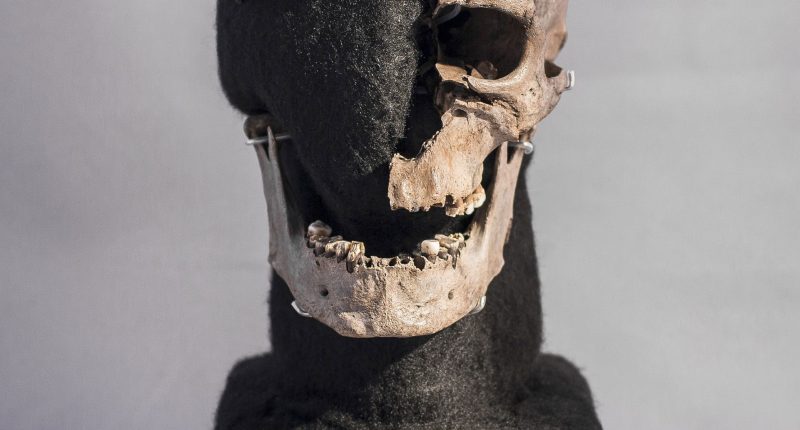RECENT research in Denmark has shed light on the life and death of a Stone Age man.
In 1915, researchers uncovered the remains of a human known as Vittrup, or Bog Man.
The remains were uncovered in a Danish bog and date back to around 3300 BCE.
These remains include Vittrup man’s right ankle bone, the shaft of a lower left shin bone, a fragmented skull, and a jawbone.
It’s believed that the individual was violently bludgeoned to death as part of a ritual killing.
Now, thanks to a new study, archeologists believe they know more about the individual’s life.
The study looked at isotopes detected in the Bog man’s tooth enamel and proteins in his bones.
After analyzing the DNA from the uncovered bones, scientists believe that the Vittrup man was not from Denmark despite being killed there.
However, they determined that the individual was born on the Scandinavian coast.
Isotopic signatures pointed to a childhood spent in a colder, likely northern climate.
Most read in Science
Furthermore, the presence of marine animals and fish in his early diet indicated a coastal upbringing.
These findings suggest that Vittrup Man undertook a significant journey at some point in his life, traveling from his coastal Scandinavian home to Denmark.
The reasons behind this migration remain unclear, whether it was voluntary or forced.
“Many explanations for such a drastic change in lifestyle and geography are possible,” the team writes.
“He may have been an immigrant or trader who became integrated into equal social standing as other members of the local Funnel Beaker society,” they added.
“He could also have been a captive/slave providing labor and possibly maritime skills.”
Vittrup Man’s tragic end also serves as a potential insight into the ritualistic practices of the Neolithic Era.
The brutal nature of his death suggests that he may have been a victim of human sacrifice, a practice not uncommon in some ancient societies.
“Evidently, such dubious honor was also given to persons of non-local provenience,” the authors said.
This post first appeared on Thesun.co.uk











